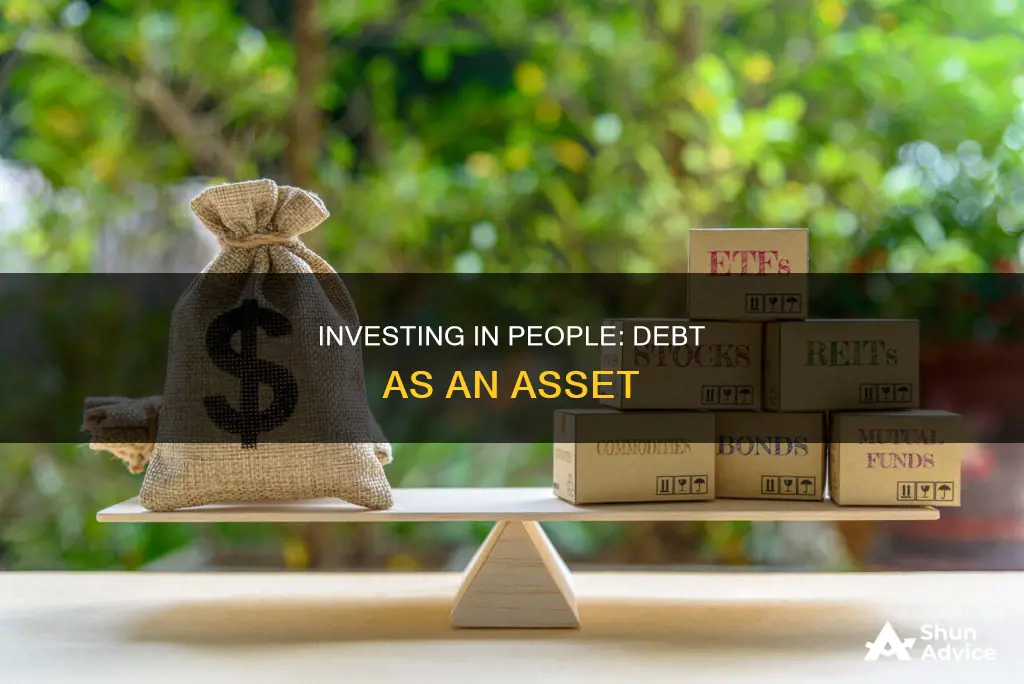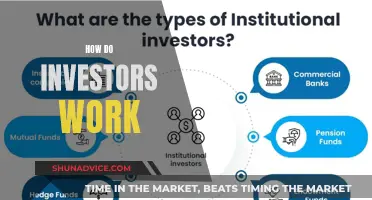
Investing in people's debt can be a profitable endeavour, but it requires careful research and planning. The debt sales industry is highly cyclical, influenced by factors such as regulations, the number of debt purchasers, and the availability of funds and debts.
A debt buyer can be any entity that purchases performing or non-performing loans with the goal of collecting more than the purchase price over time. Loans can be acquired from banks or small companies, ranging from well-performing, secured loans to unsecured, non-performing ones.
Before investing, it is crucial to research different types of debts, connect with other debt buyers, and understand market conditions, pricing, and value. When negotiating a deal, various factors need to be considered, such as the market, likelihood and timeframe of collections, debt type and age, and previous collection efforts.
Additionally, partnering with a third-party collection agency can provide valuable insights into their specialisations, charges, and collection capabilities for specific debt types and ages.
Overall, successful debt investing demands a thorough understanding of the market, diligent research, and proactive planning.
| Characteristics | Values |
|---|---|
| What is a debt buyer? | Any company, person or group that purchases performing or non-performing loans or receivables with the purpose of collecting an amount greater than the purchase price over time |
| What types of debt can be bought? | Loans can be purchased from banks or small companies with outstanding receivables. The quality of loans can range from well-performing, large-balance, secured loans, such as mortgages, to charged-off, non-performing, unsecured ones |
| What to look for in a debt portfolio? | Original loan amounts, average account balance, original loan dates, last payment dates, charge-off dates |
| Debt purchasing red flags | Debts that have passed the statute of limitations; Fake or incomplete chains of title |
| How to invest in debt? | Find and purchase debt at a deep discount; Do effective due diligence; Collect debt and make short-term high-interest loans; Buy future streams of cash flow |
What You'll Learn

How to find and purchase debt at a deep discount
Purchasing debt at a deep discount involves buying delinquent or charged-off debt from lenders at a fraction of its face value. This type of investment is often referred to as passive debt investing, and it can be a profitable venture if done right. Here are the steps to find and purchase debt at a deep discount:
Understand the Debt Buying Process:
Know what a debt buyer is and how they operate. A debt buyer purchases delinquent or non-performing loans from original creditors, such as banks, credit card companies, or loan lenders, at a significantly reduced price. The debt buyer then becomes the owner of the debt and attempts to collect the full amount or a portion of it from the debtor.
Research the Types of Debt:
Familiarize yourself with different types of debt, such as credit card debt, student loans, car loans, or mortgage debt. Each type of debt has its own characteristics, risks, and potential rewards. Consider your risk tolerance and investment goals when deciding which type of debt to focus on.
Identify Potential Sellers:
Look for lenders or groups looking to sell debts. This could include banks, small companies with outstanding receivables, or even other debt buyers who are looking to offload their portfolios. Reach out and establish contacts to be notified when debt portfolios become available for purchase.
Conduct Due Diligence:
Before purchasing any debt, it is crucial to conduct thorough research and due diligence. Analyze the debt portfolio by reviewing key data such as original loan amounts, average account balances, loan dates, payment history, and charge-off dates. Assess the collectability of the debt and the potential for recovery.
Negotiate the Price:
When you've identified a suitable debt portfolio, negotiate the price with the seller. Debt is often sold at a deep discount, sometimes for just pennies on the dollar, especially if the debt is older. Consider the age of the debt, the likelihood of collection, and the potential returns when determining your offering price.
Finalize the Purchase:
Once you've agreed on a price, finalize the purchase by executing the necessary contracts and agreements. Ensure you receive all relevant documentation, including a chain of title and signed documents from the debtor. After the purchase, the seller should provide you with a file containing full information for each debtor, including account numbers, Social Security numbers, and addresses.
Collect on the Debt:
After purchasing the debt, you can start the collection process. You can choose to collect the debt yourself or outsource it to a licensed collection agency. Be mindful of state and federal laws that govern debt collection practices to avoid any legal issues.
By following these steps, you can find and purchase debt at a deep discount. Remember that investing in debt comes with risks, and it's important to conduct thorough research and due diligence before making any investments.
Public Utilities: Worth the Investment?
You may want to see also

How to do effective due diligence and pick the ones that are most likely to pay off
Due diligence is a necessary process for both buyers and sellers to undertake to ensure the swift execution of their envisaged transaction. It is a systematic way to analyze and mitigate risk from a business or investment decision.
- Company Capitalization: Understand the company's market capitalization, which shows how big the company is by calculating the total dollar market value of its outstanding shares. This provides insights into the volatility of the stock, the breadth of ownership, and the potential size of the company's end markets.
- Revenue, Margin Trends: Analyze the company's revenue, profit, and margin trends over the past two years. Look for consistent growth or any major swings in revenue and net income. Review profit margins to see if they are rising, falling, or remaining stable.
- Competitors and Industries: Size up the industries the company operates in and identify its competitors. Compare the margins and business models of two or three competitors to determine the size of the end markets and assess the company's positioning within its industry.
- Valuation Multiples: Review valuation multiples such as the price-to-earnings (P/E) ratio, price/earnings to growth (PEG) ratio, and price-to-sales (P/S) ratio. Compare these ratios with those of competitors to identify any discrepancies in valuations.
- Management and Ownership: Assess whether the company is run by its founders or if there have been recent changes in management and the board. Look for high ownership of shares by top managers, as this indicates their vested interest in the company's performance.
- Balance Sheet Exam: Review the company's consolidated balance sheet to understand its assets, liabilities, cash levels, and long-term debt. Evaluate the debt-to-equity ratio and compare it with competitors to contextualize the company's financial position.
- Stock Price History: Analyze the short-term and long-term price movement of the stock to determine its volatility and the profit experience of its owners.
- Stock Options and Dilution: Dig into the company's outstanding stock options and understand how the share count could change under different price scenarios. Be wary of shady practices like options backdating.
- Expectations: Find out the consensus revenue and profit estimates for the next two to three years. Look for long-term trends affecting the industry and company-specific news, such as partnerships, joint ventures, intellectual property, and new products or services.
- Risks: Understand both industry-wide and company-specific risks, including legal, regulatory, and management issues. Play devil's advocate and consider worst-case scenarios and their potential impact on the stock.
Additionally, when investing in people's debt, there are some specific considerations to keep in mind:
- Types of Debt: Research the types of debts you want to buy. This could include debts with well-performing, large-balance, secured loans or charged-off, nonperforming, unsecured loans.
- Market Conditions and Pricing: Understand the market conditions by reaching out to other debt buyers to get a sense of pricing and value.
- Collection Agencies: Contact third-party collection agencies to understand their specializations, charges, and collection capabilities for different debt types and ages.
- Debt Portfolio Vetting: Look out for red flags in potential debt portfolios, such as debts that have passed the statute of limitations or fake or incomplete chains of title.
VC Bias: Do Looks Matter?
You may want to see also

How to collect debt, and the secrets to making short-term high-interest loans
How to Collect Debt
Debt collection is a challenge that requires a systematic approach and careful judgment. Here are some strategies to effectively collect debts:
- Identify potential bad debtors and act quickly. Set up your accounting system to flag overdue accounts. The sooner you take action, the more likely you are to get paid.
- Take the initiative and find out why payments are late. This could be due to various reasons, such as the customer not receiving the bill, the goods being sent to the wrong address, or issues with the quality of the goods or services provided.
- Make direct contact with the customer. Start with a polite reminder or enquiry about the bill, and then follow up as necessary.
- Try different follow-up tactics such as a personal visit, a phone call, or sending an email. Promptness and persistence are key to getting paid.
- Employ debt collectors or lawyers if all else fails. Let the customer know that you plan to pass the matter to a lawyer or debt collector, as this may encourage them to take the situation more seriously.
- Check the cost of various debt collectors and compare their costs and services. Costs may include a flat fee, a percentage of the debt recovered, or a combination of both.
- Consider the amount of money you are owed and whether it is worth chasing. Sometimes, it may be better to write off small amounts to preserve important business relationships.
Secrets to Making Short-Term High-Interest Loans
Short-term high-interest loans typically involve borrowing money from a lender and repaying it within a brief period, often less than a year. Here are some secrets to making short-term high-interest loans:
- Understand the risks and potential losses associated with high-interest loans. While these loans can provide quick access to funds, they come with steep interest rates and fees that can lead to a cycle of debt.
- Research different types of short-term loans, such as payday loans, car title loans, bank overdrafts, installment loans, or lines of credit. Each type has its own characteristics, fee structures, and terms.
- Evaluate the requirements for approval, which are typically based on factors such as salary, employment status, and credit history. Lenders may also require collateral, such as a vehicle or real estate, to secure the loan.
- Compare interest rates, fees, and repayment schedules offered by different lenders. Short-term loans can have interest rates as high as 400% or more, so it is essential to understand the full cost of the loan.
- Consider the repayment timeline, which can be as short as a few weeks or months. Ensure that you have a solid plan to repay the loan within the terms to avoid late fees and penalties.
- Be aware of the potential impact on your credit score. While timely payments can boost your credit score, missing payments or failing to repay the loan on time can negatively affect your creditworthiness.
- Understand the legal methods that creditors can use to collect debts, such as wage garnishment, liens on property, or debt collection agencies. Know your rights and seek legal advice if necessary.
- Assess your financial situation and alternatives before taking out a short-term high-interest loan. These loans should be approached with caution and only considered if you are confident in your ability to repay the debt.
Why People Avoid Investing
You may want to see also

Buying future streams of cash flow
Investing in people's debt means buying debt from a company or group that lends money. This could be a bank or a small company with outstanding receivables. The debt could be in the form of well-performing, large-balance, secured loans, such as mortgages, or charged-off, non-performing, unsecured loans.
When you buy debt, you are purchasing the future cash flow that will be generated from that debt. This is an example of using debt to build wealth.
Good Debt vs. Bad Debt
Good debt is borrowing that helps build long-term wealth. It has a low-interest rate and a short repayment period. Good debt can be used to accomplish objectives, such as taking out a mortgage on a new house, or to avoid bad outcomes, such as taking out a loan to pay a large tax bill.
Bad debt, on the other hand, can harm your credit score and deplete your finances. It is either too risky or too costly. Examples include credit card debt and car loans, which are used to buy assets that depreciate.
Cash Flow Analysis
When investing in people's debt, it is important to analyse the cash flow of the debt to ensure it is a good investment. Cash flow analysis examines the cash that flows into and out of a company, including where it comes from and what it is used for.
A company's cash flow statement will include information on cash flow from operations, cash flow from investing, and cash flow from financing. This information can be used to calculate various ratios to assess the financial health of the company, such as the operating cash flow/net sales ratio and the free cash flow.
Leveraged Investing
One way to invest in people's debt is through leveraged investing. This is when you invest your own money and borrow money to increase the total amount invested. For example, if you are investing $100 with an expected 10% rate of return, you could borrow an additional $100 to increase your total investment to $200. If the interest on the loan is less than 10%, you will make more money than if you had just invested your own money.
However, leveraged investing also increases the risk of losing your capital. If the stock price drops, you may not be able to repay the loan, and your broker may liquidate your entire position, leaving you with losses.
Why Private Equity is Worth the Risk
You may want to see also

Overcoming what could go wrong before it happens
Investing in people's debt can be a lucrative but risky endeavour. Here are some ways to overcome potential challenges before they become problems:
Conduct Thorough Due Diligence
Before investing in any debt, conduct extensive research on the borrower and the debt itself. Understand the borrower's financial situation, credit history, and ability to repay. Examine the terms and conditions of the debt, including interest rates, repayment schedules, and any underlying collateral. Due diligence will help you identify potential risks and make informed investment decisions.
Diversify Your Investments
Diversification is a crucial strategy to manage risk. Instead of investing a large sum in a single debt obligation, spread your investments across multiple borrowers and debt types. This diversification ensures that a default or non-payment by one borrower will not significantly impact your overall investment portfolio. Diversification can also help you balance your risk exposure and potential returns.
Understand the Regulatory Landscape
The debt purchasing industry is subject to various regulations, which can vary by jurisdiction. Familiarize yourself with the relevant laws, such as those governing debt collection practices, consumer protection, and the statute of limitations on debt enforcement. Understanding the regulatory environment will help you avoid legal pitfalls and ensure your investment activities are compliant.
Engage Reputable Third-Party Service Providers
Collaborate with experienced and reputable third-party service providers, such as collection agencies, legal professionals, and financial advisors. Their expertise can help you navigate the complexities of debt investing, including debt valuation, collection strategies, and risk management. Ensure these service providers have a successful track record and are licensed and insured.
Monitor Your Investments Regularly
Stay vigilant by actively monitoring the performance of your debt investments. Keep track of the borrower's financial health, repayment behaviour, and any changes in their creditworthiness. Regular monitoring allows you to identify potential issues early on and take appropriate action. It also enables you to adjust your investment strategies as needed.
Have a Risk Management Strategy
Develop a comprehensive risk management strategy that outlines your approach to mitigating potential risks. This strategy should include clear guidelines on when to buy or sell debt, how to handle non-performing loans, and how to protect your investment capital. A well-defined risk management strategy will help you make rational decisions, especially during volatile market conditions.
By implementing these strategies, you can proactively address potential challenges and enhance the likelihood of successful outcomes when investing in people's debt. Remember, thorough research, diversification, regulatory compliance, and proactive risk management are key to mitigating potential pitfalls in this investment arena.
Investing in Others: A Worthy Bet
You may want to see also
Frequently asked questions
A debt buyer is any company, person or group that purchases performing or non-performing loans with the purpose of collecting, over a period of time, an amount greater than the price purchased.
Student loans and mortgages are examples of good debt as they help individuals build long-term wealth.
Credit card debt and car loans are examples of bad debt due to their high interest rates.
There are several ways to invest in debt, including municipal tax liens, defaulted credit card debt, discount promissory notes, mortgage foreclosures, and microloans.







